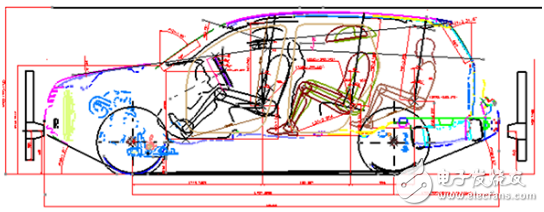Automobile design is an important means of competition to promote automobile sales. Large companies will use the means of frequent replacement of vehicles to gain consumers' favor and win over competitors. Automotive design is the first step in automotive development and has become increasingly important throughout the automotive design process.
New product development refers to a series of decision-making processes from the research and selection of products that meet the needs of the market, to product design, process manufacturing design, and to normal production. According to different development depths, new product development is also divided into four levels, S1 level development is the simplest, and S4 level involves the most comprehensive development content.
Level classification of automotive new product development depth

According to different development methods, product development can be divided into two main ways: reverse development and forward development. Reverse development began with prototype car benchmarking, which was derived from passive imitation of prototype products. Forward development begins with the early product planning, which stems from the initiative to develop a product.
Reverse development has low investment, low cost, and short development cycle. It is suitable for the initial development stage and solves the problem of product availability. At present, most of the low-speed electric vehicle companies adopt imitation roads, and then develop S1-level deep series products based on the reverse developed platform models. For example, the most common types of Benben models on the market are variants of front and rear bumpers, lights, or interior modifications based on the Benben platform models.
Forward development is an inevitable trend in the future development of low-speed electric vehicles, and it is impossible to rely solely on individual strengths. To a large extent, it depends on the scientific organization procedures for developing design and its standardization. This week's weekly report will outline the styling process for the development of the model and the content of the relevant links.
The data-based product modeling forward development flow chart is as follows:

The development of new vehicles must first conduct product feasibility analysis and product research on target markets. The main tasks are as follows:
(1) Research on consumer groups: including lifestyles, hobbies, values, consumption views, outlook on life, and use of vehicles.
(2) Competing product analysis and positioning: Identify the design direction and positioning by analyzing existing products of the same type and other companies that may form a competitive relationship in the future.
(3) Product positioning: Through the pre-design survey, determine the use and aesthetic needs of the target user population, as well as functional positioning.
(4) Determination of modeling style: The person in charge of product design convene relevant designers to discuss and determine the style, image and design direction of the product.
(5) Formulate preliminary technical plan: Calculate the technical specifications and expected performance parameters of selected models, and analyze whether the technical process can adapt to the technical level and process capability of the enterprise.
(6) Financial analysis: Analyze factors such as cost control to predict whether products can bring profits to enterprises.
2. Total layout designThe general layout design is the basis of the design. The total layout design determines the main size and basic shape of the vehicle, and stipulates the design hard points for the designer's conception and play, so that the shape and creative design can be targeted.
The overall layout design determines the configuration relationship, weight, regulations and performance indicators of the vehicle, chassis, powertrain and other systems through the overall planning of the vehicle design. Most of the current layout designs use digital three-dimensional design. Low-speed electric vehicle companies can make appropriate changes and partial improvements based on the existing mature overall layout, which can simplify the workload and shorten the development cycle.

YESWITCH ELECTRONICS CO., LTD. , https://www.yeswitches.com
![<?echo $_SERVER['SERVER_NAME'];?>](/template/twentyseventeen/skin/images/header.jpg)